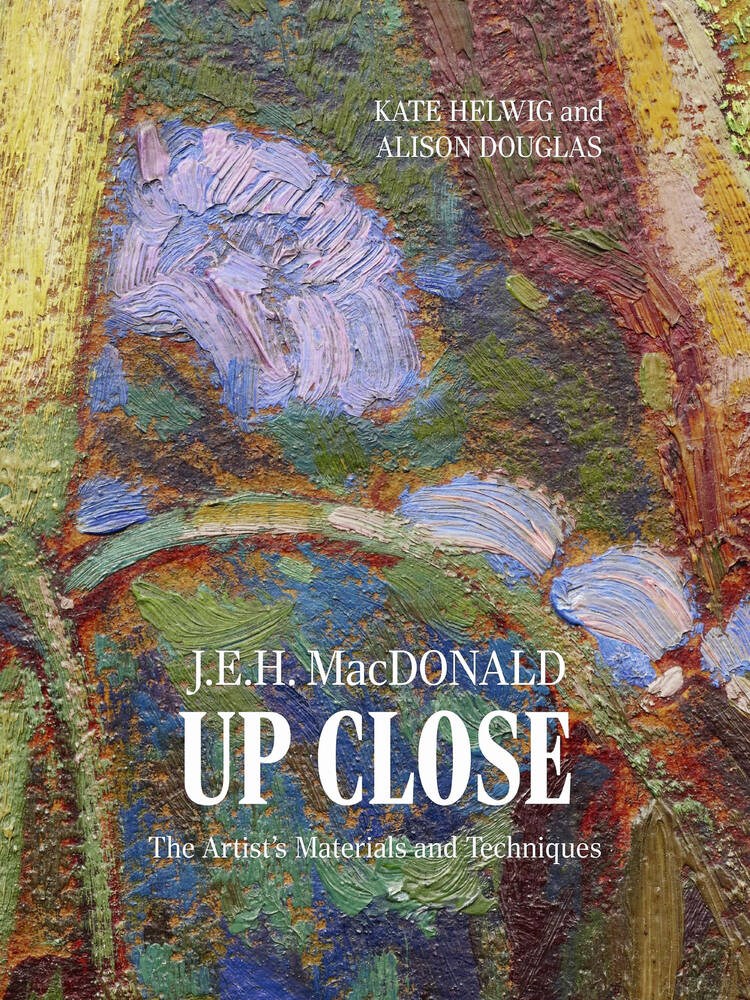J.E.H. MacDonald Up Close: The Artist’s Materials and Techniques
By Kate Helwig and Alison Douglas
Goose Lane, 216 pages, $35.
Let’s be clear, right from the start, about this book.
It’s much more than a comprehensive examination of how J.E.H. MacDonald, one of the founders of the Group of Seven, created his paintings and oil sketches.
It’s much more than a guide to his works, and much more than a peek into his portfolio.
This book represents detective work at its finest — a thorough investigation into what MacDonald did and how he did it. The information here will be invaluable in the restoration of his works, as well as in the authentication of any new discoveries that might emerge from someone’s attic.
It is also a vital source of information for anyone interested in the Vancouver Art Gallery’s MacDonald exhibition — J.E.H. MacDonald: A Tangled Garden? – which continues until May 12.
James Edward Hervey MacDonald was more than an artist; he was one of Canada’s leading graphic designers, an art teacher, a poet and calligrapher.
Just before he turned 40, MacDonald quit his job as a commercial designer so he could paint full-time. In 1920, he co-founded the Group of Seven, which promoted a distinct Canadian art based on the Canadian landscape.
The creation of the Group of Seven was a critical step in the evolution of art in Canada, and works by members of the group are highly prized today. And where there is high value, there is also a high risk of forgery.
It was a big deal when the Vancouver Art Gallery announced in 2015 that 10 previously unknown oil sketches, attributed to MacDonald, had been received in a donation.
When unknown works by a famous artist appear out of nowhere, what should happen next? Check provenance, the record of ownership. See how the works fit in – or don’t – with known works by that artist. And above all, try to confirm authenticity.
In this book, art conservation experts Kate Helwig and Alison Douglas use visual examination and scientific analysis to determine everything they could about MacDonald’s work, with a focus on the materials he used and his techniques.
The book includes excerpts from MacDonald’s diaries, letters, and lectures, which help provide context. After all, fine art is not produced in a vacuum, so it is important to note the social and historical background.
Key artworks are reproduced in J.E.H. MacDonald Up Close, along with photographs taken through a microscope that have not been made public before. These “up close” views reveal the texture of MacDonald’s brushstrokes and the ways he layered and mixed his paint.
For much of the book, Helwig and Douglas take the reader on a journey of discovery, dealing with every possible aspect of MacDonald’s work, including his supports, preparation, technique and materials.
All of this prepares us for their analysis of the 10 oil sketches at the Vancouver gallery, giving us the background that we need along with confidence in their legwork.
Helwig and Douglas certainly have the right credentials. Helwig is a senior conservation scientist at the Canadian Conservation Insitute in Ottawa, and Douglas is a conservator of the McMichael Collection of Canadian Art in Kleinburg, Ontario.
Soon after the Vancouver donation became known, art experts raised concerns about the authenticity of the 10 works. But they did not agree, so the gallery postponed a planned exhibition in order to investigate the works further.
J.E.H. MacDonald Up Close (the book) and J.E.H. MacDonald? A Tangled Garden (the exhibition) both provide the definitive answer to the questions raised about the 10 donated works.
To be brief, they are fakes — but what is the evidence? How were the conclusions reached? That is a major part of the value of both the book and exhibition.
J.E.H. MacDonald Up Close will have a strong appeal to art enthusiasts, but it deserves wider recognition. Watch Forensic Files, or any of the other true crime television shows? Then this book is for you.
And who knows? By the end, you might know more about the creation of art than you ever thought possible. That wouldn’t be a bad thing.
The reviewer is the editor and publisher of the Times Colonist.



